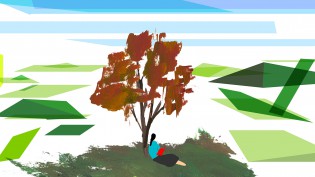
Sometimes it’s a challenge to feel satisfied with the state of the web and the writing therein. When we look at the headlines, the thinkpieces, the gifs, the desperate pleas for engagement, things can seem dire. A sense of ennui takes over. It’s happened to all of us.
This feeling often makes readers long for something more. Where does truly good, truly smart, truly informed writing live? we ask. For many, the answer is the same — small literary and cultural magazines.
Take, for example, an episode from earlier this summer. Kyle Chayka wrote an essay for The Baffler about the proliferation of the thinkpiece, arguing that the emptiness of the genre is eroding journalism. This proclamation was followed by a conversation on Twitter about possible solutions. What’s causing the problem, asked Modern Farmer’s Jake Swearingen? Are metrics — pageviews, clicks, attention minutes — the issue? Is the structure of online advertising to blame? And who, if anyone, is able to resist the temptation of the churn? Where can good content be found?
The Awl Weekend Companion! says The Baffler’s Noah McCormack.
Nautil.us! says Swearingen.
The Magazine! says Pacific Standard’s Nicholas Jackson.
BKLYNR! says Shane Ferro.
You sometimes hear that publications like these are the only ones that really care about quality anymore. And what’s more, people say, all it takes is one or two full time editors, a solid team of writers, a small pool of subscribers, and maybe some ad revenue. Right?
@shaneferro @noahmccormack @chaykak @mims the q is: could you only do original stuff (not just aggregate) and sell it at high enough level
— Jake Swearingen (@JakeSwearingen) July 30, 2014
@JakeSwearingen @noahmccormack @chaykak @mims I think the answer is no, and that's why it doesn't exist yet.
— Shane Ferro (@shaneferro) July 30, 2014
@shaneferro @JakeSwearingen @noahmccormack @mims argh low subs and no office space could easily sustain a thing with even 1k subscribers
— Kyle Chayka (@chaykak) July 30, 2014
@shaneferro @JakeSwearingen @noahmccormack @mims pretty sure @Choire once said you could launch a digital-only mag with $100k
— Kyle Chayka (@chaykak) July 30, 2014
 Little magazines gone digital: How the late-adapting literary press has made its way in the web agen+1: Learning that print and digital can peacefully coexistJacobin: A Marxist rag run on a lot of petty-bourgeois hustleThe Baffler: The anti-innovation magazine embraces digitalThe New Inquiry: Not another New York literary magazineA conversation with David Rose, little magazine veteran and publisher of Lapham’s QuarterlyMcSweeney’s Meets Internet: A little publisher survives holding tight to its eclectic, literary roots
Little magazines gone digital: How the late-adapting literary press has made its way in the web agen+1: Learning that print and digital can peacefully coexistJacobin: A Marxist rag run on a lot of petty-bourgeois hustleThe Baffler: The anti-innovation magazine embraces digitalThe New Inquiry: Not another New York literary magazineA conversation with David Rose, little magazine veteran and publisher of Lapham’s QuarterlyMcSweeney’s Meets Internet: A little publisher survives holding tight to its eclectic, literary rootsThese are some of the questions I asked a handful of folks who actually run these little magazines. I sat down with John Summers, who recently relaunched The Baffler, to talk about embracing a website redesign despite an ethos that bucks against “innovation.” I spoke at length with Bhaskar Sunkara about how he financed the first issues of Jacobin, and how he rationalizes his socialist politics with his “petty bourgeois” business operations. I got to talk to with the trio of women who (at that time) spent their days running N+1 — Carla Blumenkranz, Amy Ellingson, and Dayna Tortorici — who are currently celebrating that magazine’s 10th anniversary. I also spoke with David Rose of Lapham’s Quarterly about what high-minded journalism school graduates today don’t but should know about old-school publishing.
In these stories, which will be posted throughout this week, there are no clearcut answers, no overarching theme or solution. If anything, what’s most interesting is how disparate the strategies at play are: This is not an industry with best practices. But despite the challenges, little magazines do endure; the question is: How?